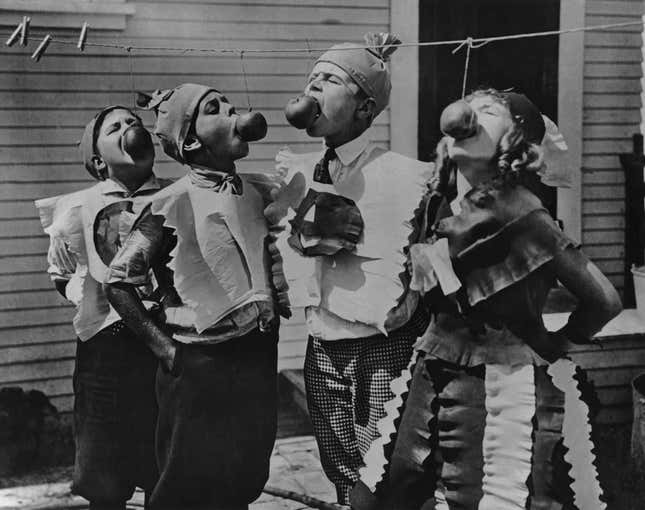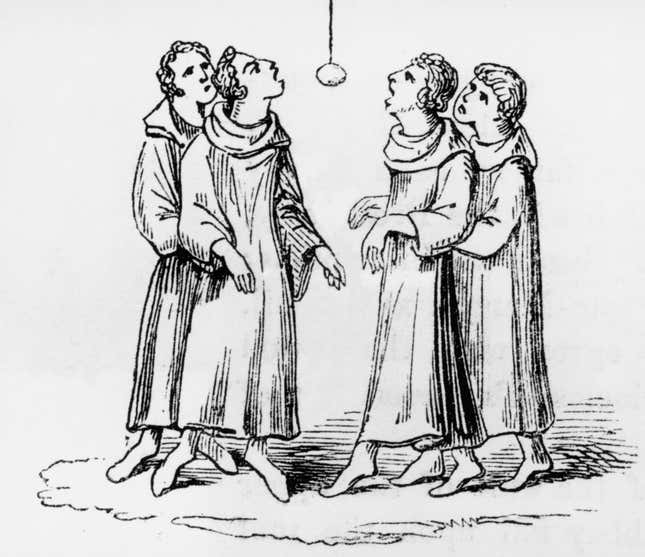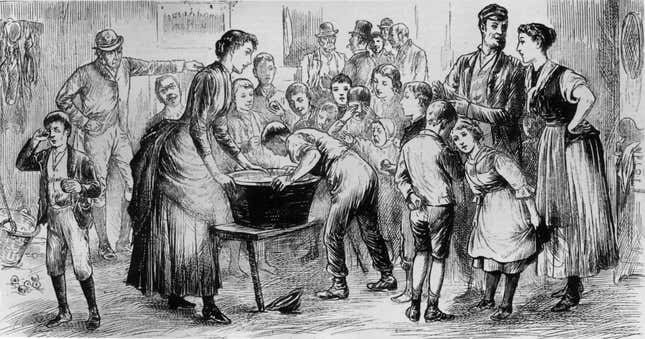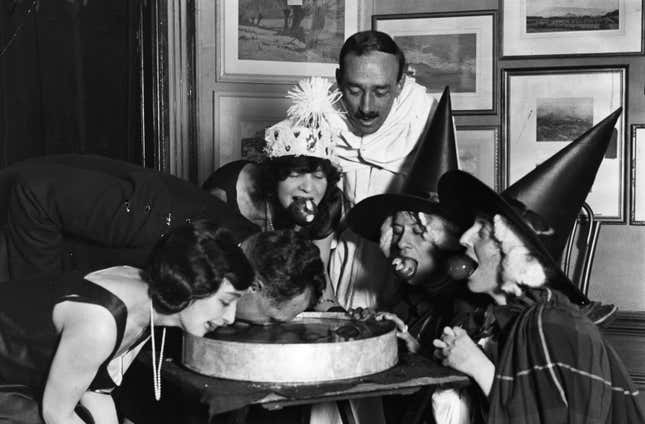

As a child, one of the dubious highlights of the annual Fall Festival at the elementary school was bobbing for apples—an unhygienic affectation common to the Northeast, where small children and some adults stick their faces in a tub of water, scrabbling for apples. This tradition—which hits a little different during a pandemic—in fact goes back hundreds of years, and has involved varying ratios of danger, slobber, and romance.

In this engraving above from 1550, four men participate in what I think is a variation of Snap-Apple, a game that tasked its participants with trying to catch an apple dangling on a string. These monks seem to be playing a less-dangerous version of a more common game, described by Mental Floss:
-

-

-

-

-

-

-

-

-

-

-

-

-

-

-

-

-

-

-

-

-

-

-

-

-

-

-

-

-

-

-

-

-

-

-

-

-

-

-

-










































